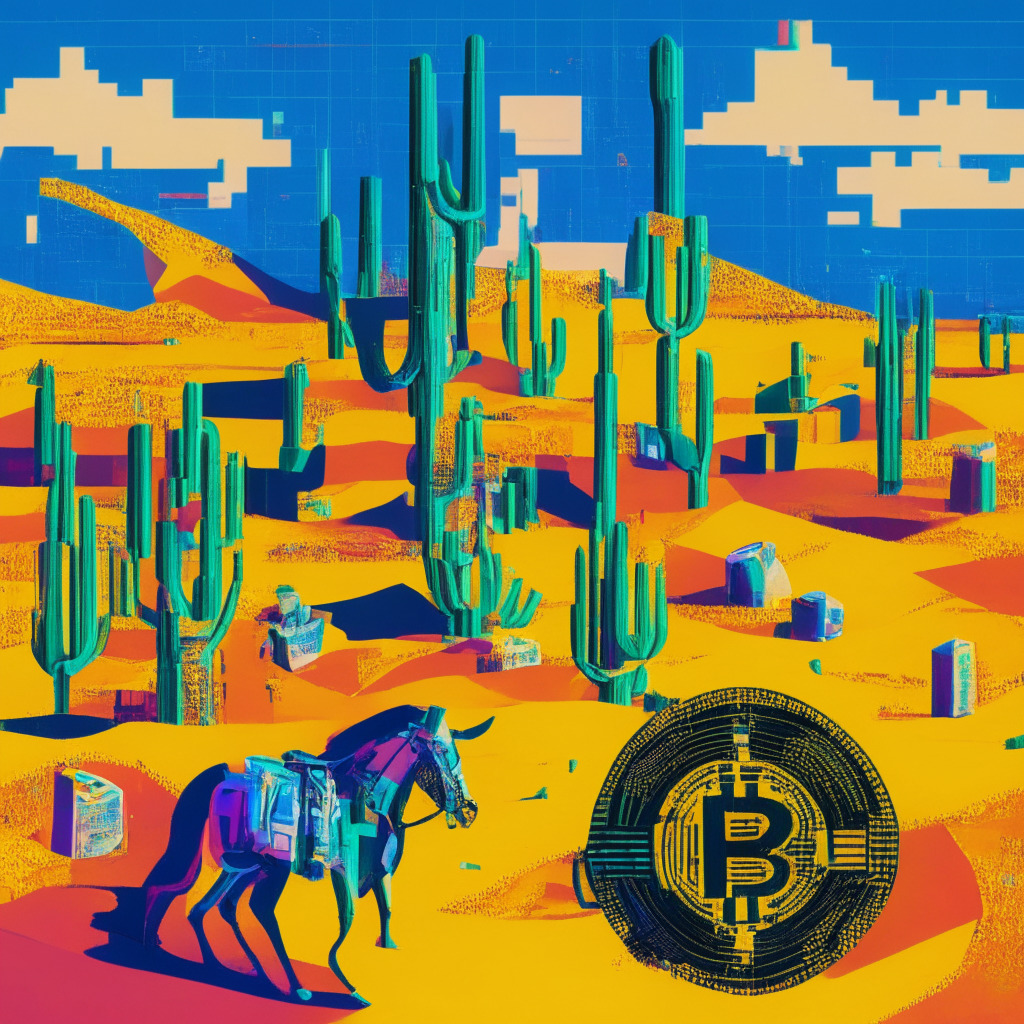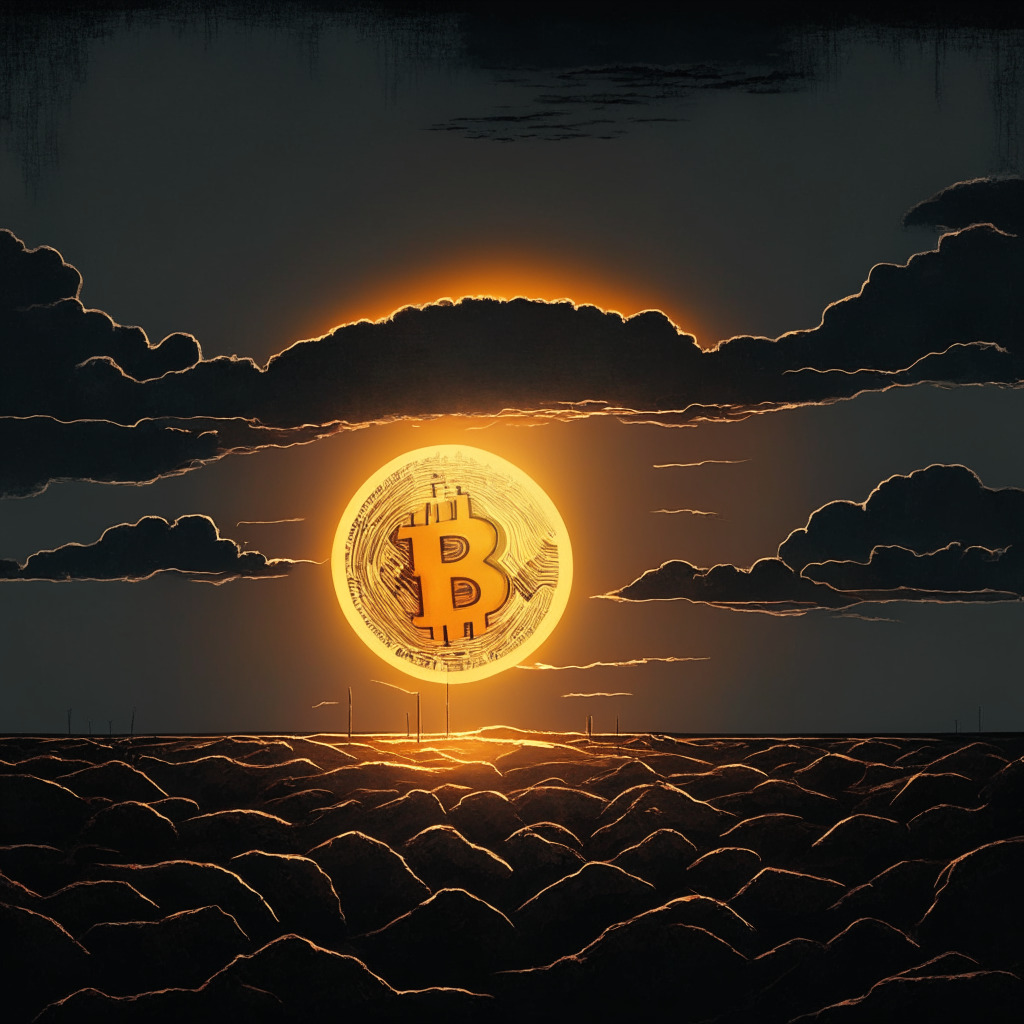“Analysts reveal ‘de-pegging’ is more common in stablecoins USDC and DAI compared to Tether and Binance USD. While stability ideally requires good governance, collateral and reserves, market confidence and adoption, USDT has shown steadiness despite mainstream scrutiny.”
Search Results for: circle
Redefining Consumer-Brand Relationships: Wallet 3.0, Privacy and the Future of Engagement
“Wallet 3.0, Web3’s killer application, is reshaping customer-brand engagement towards a more privacy-centric experience enabled by decentralized tech. Brands are recognizing the need for transparency and user privacy, transitioning to user-owned, NFT-enabled wallets for more direct and trustworthy interactions, leading to enhanced loyalty, lower CAC, and improved CLTV.”
Bitcoin’s Unpredictable Surge & Plunge: Lessons from a $23M Shorts Liquidation
Bitcoin’s inherent volatility was on full show as it liquidated $23M in shorts, driving the price to a September high before swiftly reversing direction. The market’s fickle behavior underscores the necessity for comprehensive research prior to trading or investing.
Prospects and Perils: The Chicago Fed’s Optimistic Outlook vs the Global Market’s Apprehension
“Economists at the Federal Reserve Bank of Chicago suggest economic tightening’s goal may have been achieved, with implemented rate increases potentially leading to a soft landing and guiding inflation towards the 2% mark. This scenario seems particularly favorable for cryptocurrencies’ market performance, poised for a ‘goldilocks moment’.”
Redefining Value: The Digital Frontier of Tokenized Real-World Assets
“Tokenized real-world assets are becoming mainstream with firms like Coinbase, Circle, and Aave forming the Tokenized Asset Coalition to promote the transition to decentralized finance. Predictions estimate tokenized assets reaching $16 trillion by 2030. Meanwhile, key financial entities globally are considering or offering crypto-related services, signifying a pivotal switch in financial systems.”
The Fine Line Between Crypto User Authentication and Privacy Intrusion
“The crypto industry is prioritizing proof-of-humanity solutions to distinguish genuine users from bots. While techniques such as Zero Knowledge Proofs and blockchain-based Proof of Burn ensure credible, anonymous verification, they also need to incorporate ‘privacy-by-design’ principles. The focus is on user control, data privacy, and safeguarding against fake accounts and automated bots without infringing user’s privacy.”
Custodial vs Non-Custodial Crypto Wallets: A Balancing Act of Convenience and Security
“The article debates the merits of custodial versus non-custodial wallets in cryptocurrency. Custodial wallets, managed by third parties, offer simplicity but present security risks. Non-custodial wallets provide total control, upholding cryptocurrency’s core ethos of decentralization but with less convenience. The choice involves balancing security, control, and services.”
Fostering Adoption of Traditional Assets on Blockchain: The Role of the Tokenized Asset Coalition
Crypto industry leaders, including Coinbase and Circle, form the Tokenized Asset Coalition to spur adoption of traditional financial assets on blockchain. The coalition’s aim is to bring the “next trillion dollars of assets” to blockchain technology through education and advocacy, fostering the adoption of public blockchains, asset tokenization, and institutionalized decentralized finance (DeFi). This initiative predicts a more efficient, cost-effective, and transparent system with the adoption of tokenized assets.
Groundbreaking: U.S. Poised for First Spot Ether ETFs – A Game Changer or A Risk Too Far?
“Cboe’s BZX exchange is preparing for a historical first with the potential launch of the U.S.’s maiden spot ether exchange-traded funds (ETFs). The SEC’s approval of such a move would mark a new era of crypto trading, including on-the-spot ether exchanges via ETFs. The decision may reshape the financial landscape, creating a new entry point for traditional investors into the realm of digital currency.”
Takashi Murakami’s NFT Adventure: Unpredictable Markets yet an Unwavering Faith in Digital Art’s Future
“Japanese artist Takashi Murakami’s introduction into the cryptoverse with Non-Fungible Tokens (NFTs) was impacted by the 2022 crypto collapse. Despite this, his belief in digital art remains strong, evident in his exhibition at San Francisco’s Asian Art Museum.”
Ethereum’s Struggle: Battling Market Fear Amid Shaky Support Levels
Despite Ethereum’s 31.3% price surge between March 10 and 18, there are concerns about the crypto’s ability to maintain this upward momentum. Rising bearish sentiment, decreases in key ETH price metrics, and negative market developments are troubling the ecosystem. There are fears over potential liquidation of some $4.8 billion ETH deposits held in the Grayscale Ethereum Trust, amid declining smart contract transactions and investor interest. Ethereum’s position is further pressured by its competitors like Visa integrating Solana blockchain and Coinbase planning to convert old versions of USDC to a new format.
Bitcoin’s Volatility and Promising Altcoins: A Roller Coaster Ride in Cryptocurrency Market
“While Bitcoin attempts to break its current trading range, the market volatility dwindles around $26,000. Doji patterns on the weekly chart suggest ambivalence regarding Bitcoin’s future trajectory. Altcoins like Toncoin, Chainlink, Maker, and Tezos show dynamic movements, suggesting potential breakout with volatility as the game’s name.”
Visa Dives into Stablecoin Payments: A Futuristic Move or an Unnecessary Intrusion?
“Visa partners with Solana blockchain, venturing into stablecoin payments. This sees Visa using stablecoins like USDC and blockchain networks such as Solana and Ethereum to increase cross-border settlement speed and offer more accessible options for fund transfers via Visa’s treasury.”
Foreseeing a Bitcoin Crash: Comparing Cryptocurrency Trends and Future Stability with Stablecoins
“An ominous Bitcoin price metric that previously resulted in a -25% FTX crash is repeating, centred around the BTC rate of $25,726. Market spectators prepare for a possible drop to $23,000. The Short to Long-Term Realized Value (SLRV) ratio indicates potential sales growth in ‘older’ Bitcoins, urging caution among investors. Meanwhile, stablecoin Circle’s USD Coin (USDC) now supports smooth transitions to Base and Optimism networks.”
Crossing Bridges: USDC Expansion to Base & Optimism Networks – A Milestone or Misstep?
In a significant development, USD Coin (USDC) has expanded to Base and Optimism networks, allowing Coinbase and Circle account holders to directly transfer their USDC stablecoin to Base. However, the new native USDC struggles with full integration across networks, causing user confusion and scepticism. The future of this decentralized currency hinges on balancing innovation, competition, and user convenience.
Labor Day Market Fluctuations: Bitcoin Declines but Solana Shines
Following Bitcoin’s recent dip to $25,700, market uncertainty pervades, driven by SEC’s delay of other Bitcoin ETF applications like BlackRock and Fidelity. Factors such as decreasing trading volume, multi-year lows in Google search trends, and record low volatility point towards a prevailing indifferent attitude. Nevertheless, with Solana’s SOL token rising and Visa’s initiative to expand settlement capabilities on blockchain, optimism still persists in crypto space.
VISA Leverages Solana Blockchain and USDC Stablecoin for Faster International Payments
“VISA has enhanced its stablecoin settlement ability with Circle’s USDC stablecoin on the high-speed Solana blockchain, making it one of the first financial institutions to harness Solana for scaled settlements. VISA’s integration of stablecoins like USDC on global blockchain networks aims to improve international settlements speed and give clients a modern option to conveniently transact funds.”
Financial Misconduct Scandal at Crypto Exchange FTX: Ripple Effect on the Crypto Industry
“Recent filings at the United States Bankruptcy Court indicate financial irregularities at crypto exchange FTX. Documents suggest misuse of company funds by executives, with transactions aimed to enrich the top brass at FTX and Alameda Research.”
Harnessing AI in HR: The Power-Packed Potential and Unseen Pitfalls
“AI is revolutionizing HR, improving efficiency in talent acquisition and retention while predicting potential turnover. However, challenges such as data privacy, algorithmic biases, and reliance on technology remain. The goal is to supplement human expertise, focusing on understanding people’s aspirations and building trust, aided by bespoke AI solutions.”
Financial Giants Reinforcing Bitcoin’s Legitimacy: A Mixed Blessing?
“BlackRock, Fidelity Investments and VanEck’s applications for Bitcoin ETFs imply a strategic operation enhancing Bitcoin’s credibility and shifting its perception as a separate digital asset class. However, Bitcoin’s mainstream proximity might invite regulatory issues. Despite potential market shocks, Bitcoin transforms from a casual curiosity into a serious financial player due to these changes.”
Roadmap to Data Liberty: Tackling the Leap from Web2 to Web3
“Deceptive practices by tech companies prompt the question: Who owns my data and what can be done with it? The shift from centralization to decentralization could confer users with power over their information, promoting data freedom, security, and privacy. However, this transition needs cooperation from parties benefiting from the current system.”
Lufthansa Banks on Blockchain: Navigating the Ups and Downs of NFT Loyalty Programs
Lufthansa, a major European airline, has launched an NFT loyalty program on the Polygon Network. It enables passengers to turn their travels into valuable NFTs via their Uptrip mobile app, potentially earning them rewards such as miles or business lounge vouchers.
The Quick Rise and Dip of Friend.tech: A Discerning Dissection of Crypto Fads and Futures
“The social app Friend.tech, constructed on Base layer-2 network of crypto exchange Coinbase, accumulated over $4.2 million in Ether fees in short periods. However, recently the transaction activity plunged by 95%, with volumes dropping from $16 million to barely over $700,000. Despite this, user activity remains dynamic with total users nearly doubling over the previous week.”
Regulating AI: Struggling Copyright Laws in the Era of Generative AI Models
The U.S. Copyright Office seeks insight on copyright concerns related to Artificial Intelligence (AI), particularly the use of copyrighted works to train AI and issues around AI-generated content. Pressing issues include AI’s capacity to mimic human artists. Media and entertainment industries grapple with unauthorised use of copyrighted materials for AI training. This discourse on AI, copyright, and regulation intertwines ethics, transparency, and surveillance matters.
Surge in Crypto Space: Binance’s Expansion, HashKey Partnership, Patricia Token, and Favorable EOS White listing
“Binance Japan aims to triple its token offerings by listing 100 more. HashKey partners with imToken for digital asset self-management. Patricia, an Nigerian cryptocurrency exchange, launches ‘Patricia Token’, a debt management tool. SEBA Bank’s Hong Kong branch obtains approval-in-principle for securities and virtual asset dealings. EOS is whitelisted by the JVCEA for trading against Japanese yen. Cathedra Bitcoin improves its cryptocurrency mining production.”
Bitcoin Mining: A Hidden Champion in Green Energy Revolution or Grid Nightmare?
Bitcoin miners, against popular belief, are actually evolving to become beneficial players in grid optimization and the ongoing green transition. They leverage underutilized renewable energy sources, partake in grid-flexibilization initiatives and provide a unique capability for swift power usage adjustments. They suggest new strategies for energy-intensive industries to navigate the renewable energy landscape.
Grayscale’s Victory Stirs Up Controversy: Doubts Over SEC’s Gensler Heighten
“Cryptocurrency circles discuss Grayscale’s lawsuit and SEC chair Gary Gensler’s role. Congressman Warren Davidson suggests Gensler’s SEC decisions lack stead, as demonstrated by Grayscale’s legal victory. This opens up possibilities for a Bitcoin spot ETF emergence in the US, but the situation remains uncertain.”
Binance Expands Crypto-to-Bank Services in Latin America: Opportunities and Challenges
Binance is expanding its reach in Latin America offering a crypto-to-bank account payment scheme, named ‘Send Cash’. This allows users from nine Latin American countries to transfer crypto funds directly into bank accounts, leveraging Binance’s native crypto payment technology platform, Binance Pay. Binance’s initiative aims to overcome challenges linked to the financial exclusion in Latin America.
Blockchain Partnerships: Unlocking Potential for Traditional Companies and Navigating Pitfalls
“Traditional companies partnering with blockchain projects can enhance transparency, improve efficiency, control workflows and access new communities. These collaborations could bring competitive advantages and new revenue opportunities. However, navigating volatility in the Web3 market is challenging, making long-term alliances more preferable.”
Evolution of Blockchain: Prospects, Regulatory Challenges, and Invisible Integration
“In a recent interview, Circle CEO Jeremy Allaire conveys optimism towards the evolution of digital assets. He highlights the transition from speculative to utility value as a major advancement, mentioning his company’s launch of USD Coin, a stablecoin designed to reduce price fluctuations and improve payment processing. Allaire underscored the importance of a federal regulatory framework for stablecoins to avoid financial downturns, and projected a future where money transfers instantaneously and freely on the internet.”
Navigating Bitcoin Adoption in El Salvador: Promises, Pitfalls and Possibilities
Bitcoin holds promise in building an equitable financial system, but its understanding is a hurdle for many. In El Salvador, DitoBanx’s CEO aims to ease the transition, offering Bitcoin-based services to the unbanked. However challenges including volatility and apprehension towards crypto adoption persist.
Robinhood’s Mysterious $3 Billion Bitcoin Wallet: A Deep Dive into the Brewing Controversy
Robinhood is reported to control a single Bitcoin wallet with over $3 billion, ranking third behind Binance and Bitfinex in terms of Bitcoin holdings. Despite this, Robinhood experienced an 18% slump in crypto trading volume in Q2, creating questions regarding the ownership and acquisition of such vast wealth amidst declining trading volumes.































